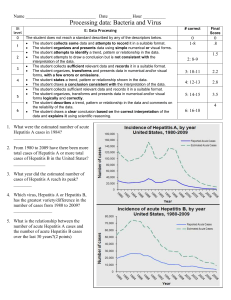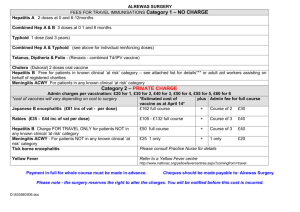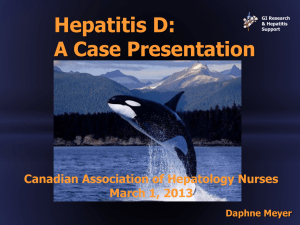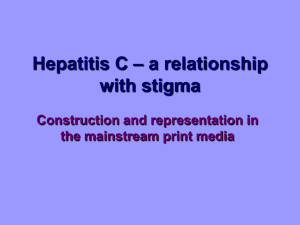UCLA-UW collaboration re: Hepatitis B in Koreans
advertisement
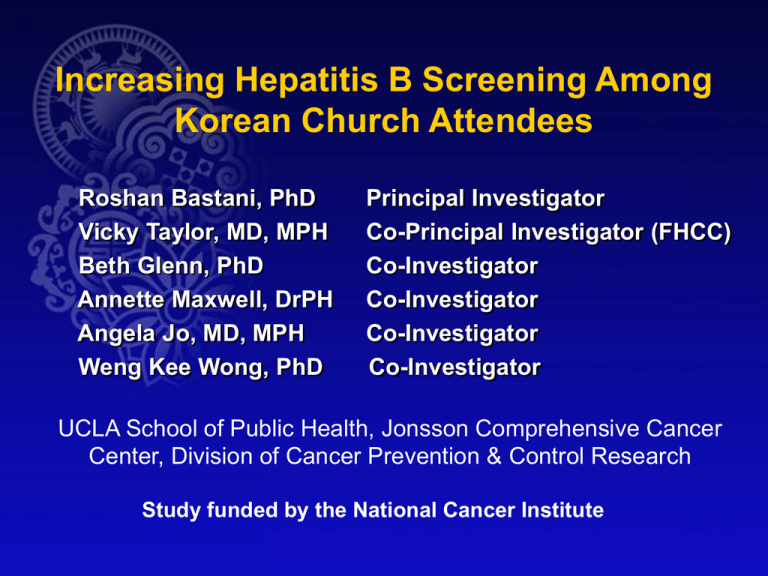
Increasing Hepatitis B Screening Among Korean Church Attendees Roshan Bastani, PhD Vicky Taylor, MD, MPH Beth Glenn, PhD Annette Maxwell, DrPH Angela Jo, MD, MPH Weng Kee Wong, PhD Principal Investigator Co-Principal Investigator (FHCC) Co-Investigator Co-Investigator Co-Investigator Co-Investigator UCLA School of Public Health, Jonsson Comprehensive Cancer Center, Division of Cancer Prevention & Control Research Study funded by the National Cancer Institute Focus on Korean Americans 2nd highest liver cancer rates among Asians 3rd most populous Asian group Up to 12% of Koreans chronically infected with hep B Low hep B serologic testing rates Immigrant population = greater hep B risk No liver cancer prevention efforts targeting Koreans Results of Pilot Study in Korean Community 141 Korean Americans from churches and a clinic Only 56% ever had a hepatitis B test 34% did not know Koreans at higher risk for hepatitis B Only 36% knew hepatitis B infection can be lifelong Common barriers to testing Fear of a bad diagnosis (75%) Cost of test (61%) Time (46%) Church preferred site to receive health information vs. worksite, clinic, health fair Rationale for Church-Based Intervention No evidence based programs for hepatitis B Church-based programs successful in other minorities 80% of Koreans attend church regularly Adaptation necessary: for content & ethnicity Small group: Cost-efficient & consistent More likely to be sustained after grant Study Design Identification of Churches (n = 40) Intervention Churches N=20 Comparison Churches N=20 In-Person Baseline Interview In-Person Baseline Interview N = 448 N = 448 Hepatitis B Small Group Session Physical Activity/Nutrition Small Group Session 6-Month Telephone Follow-up Interview The Health Behavior Framework INTERVENTIONS Individual Factors Knowledge Communication & rapport with provider Health Beliefs Social Support Cultural Factors Barriers/Supports Intentions Hepatitis B serologic testing Institutional Factors Language differences Navigation problems • Demographics • Medical History • Insurance Group Intervention Session: Process Blend of discussion group & educational presentation Information presented verbally, visually and in-print to enhance interest & retention Group format Culturally competent intervention Social norms & Active participation Assures acceptance & effectiveness Strengths of Projects Adaptation of existing church based programs focused on increasing hepatitis B testing Opportunity to document process of adaptation Utilizing a rigorous evaluation Collaboration across CPCRN network sites will allow for: Sharing of complementary expertise and experiences Understanding of similarities and differences between Koreans and Chinese Lessons learned can be used to adapt programs for other ethnic groups at risk for hepatitis B and liver cancer





